unless otherwise stated.
This article traces how Oklahoma City got a fabulous downtown park, the Crystal Bridge Tropical Conservatory of which celebrated its 20th Anniversary on March 25, 2008, and gives a heck of a lot of eye candy in the process!
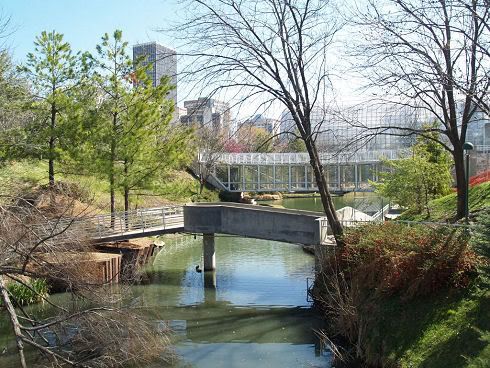
If you want to skip the "history" part and go straight to "today," click here for an outside stroll. To jump directly to the March 25, 2008, 20th Anniversary festivities, click here.
When There Were No Big Parks Downtown. Maybe I've missed something, but a major "park" in downtown Oklahoma City wasn't something originally contemplated during the Land Run or at any time thereafter ... not until 1946. Early on, getting your Land Run "claim" staked out and the development of commerce, theaters, etc., were the things. The only things. A major park in downtown ... where's the bucks in that? You gotta be crazy!
 Not that our ancestors didn't care for parks, but Wheeler Park and Delmar Garden were fairly near downtown, one to two miles to the west and south. And, Stiles Park at NE 8th & Stiles was even closer (though from what I know at this point it doesn't seem to have been much of a park). So, what's the point of having a "downtown" park?
Not that our ancestors didn't care for parks, but Wheeler Park and Delmar Garden were fairly near downtown, one to two miles to the west and south. And, Stiles Park at NE 8th & Stiles was even closer (though from what I know at this point it doesn't seem to have been much of a park). So, what's the point of having a "downtown" park?By 1946, some "urban planners" (of which group doubtless none existed in the 1889 Land Run) started seeing it differently ... wouldn't it be cool if downtown Oklahoma City had a major park, sports facilities, and all that goes with it? By that time, Oklahoma City's population was somewhere between 1940's 204,424 and 1950's 243,504. The proposal below, from a July 11, 1946, Oklahoman article, shows a proposed downtown park and sports facilities complex that might have been ...
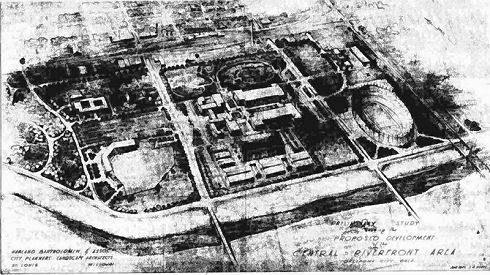
... but never did. The ideas of a downtown park and sports facilities would need to germinate for many, many years to come. Sports facilities would need to wait until MAPS ... but the renewed idea of a downtown park came sooner, with Urban Renewal.
Fast forward 16 years to 1962 and things began to change for the "park" part. Urban Renewal was starting to pick up steam, and a park was planned to be a part of that renewal. According to an August 17, 1962, article in the Oklahoman,
Creation of a park area in the heart of downtown Oklahoma City along the lines of Copenhagen's famed Tivoli Gardens is being planned by the newly-organized Urban Action Foundation.
Sam Zisman, the city's urban planning consultant, said Thursday he will leave for Europe next Wednesday with several of the foundation's members to visit Copenhagen and will study the world-famous garden as a first step toward carrying out the plan.
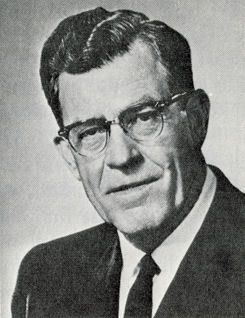 Dean A. McGee, President of the Urban Action Foundation and widely regarded as the downtown park's principal cheerleader, benefactor, and mover, was on the trip, also. The image shown here was in Roy Stewart's 1977 Born Grown. Without McGee's longstanding efforts, it is doubtful that the project would have been accomplished. Dean A. McGee became president and chief executive officer of Kerr-McGee in 1954, Chairman of the Board in 1963 upon the death of Robert S. Kerr. In 1973, the company's headquarters moved to its new 30 story Kerr-McGee Tower in downtown Oklahoma City.
Dean A. McGee, President of the Urban Action Foundation and widely regarded as the downtown park's principal cheerleader, benefactor, and mover, was on the trip, also. The image shown here was in Roy Stewart's 1977 Born Grown. Without McGee's longstanding efforts, it is doubtful that the project would have been accomplished. Dean A. McGee became president and chief executive officer of Kerr-McGee in 1954, Chairman of the Board in 1963 upon the death of Robert S. Kerr. In 1973, the company's headquarters moved to its new 30 story Kerr-McGee Tower in downtown Oklahoma City. Following the 1962 article, a national competition was announced in February 1963 for landscape architecture students to submit designs inspired by Copenhagen's prestigious and tenured (since 1843) Tivoli Gardens, the 1st prize being a study trip to Copenhagen or its cash equivalent. 149 entries were received from 12 colleges around the country. Judging was done by several notables in such things – Grady Clay, Editor of Landscape Architecture, Louisville, Kentucky, Alan Tanaguchi, Professor of Architecture at the University of Texas, and Steward E. King, San Antonio landscape architect, occurred on April 4 and 5. Henning Soager, managing director of Copenhagen's actual Tivoli Gardens, spent a week in Oklahoma City and assisted in the judging – a "Scandinavian Ball" was held in his honor at the newly constructed Sheraton-Oklahoma Hotel.
At the time, no particular area had been defined for such a proposal – if, in fact, it would ever come to fruition – but the contestants were given the area shown below for contest purposes ...
and the Transportation Terminal at the Right
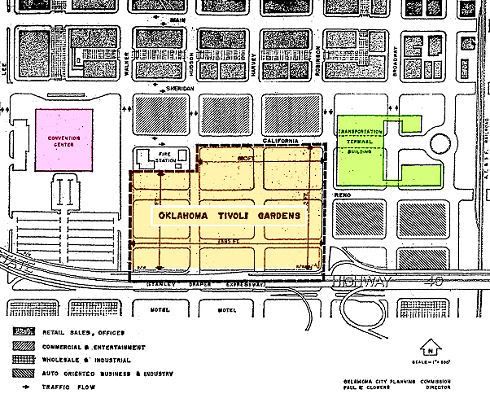
According to an April 5, 1963, Oklahoman article, Mr. Soager described Copenhagen's Tivoli Garden's long-standing success as being, "40 percent Beethoven, 40 percent Hans Christian Anderson, and 20 percent high-brow Coney Island." He also noted that "Tivoli," spelled backwards, is "i-lov-iT." But the Oklahoma City counterpart did not contemplate an amusement park ... so skip the Coney Island, if not the Hans Christian Anderson, version for us! Ours was to be, quite simply, a beautiful downtown park, sans bumper cars which could then be had at Springlake!
Kenneth Sangster of Raleigh, North Carolina, graduate student at the University of North Carolina, won 1st prize with this design ...
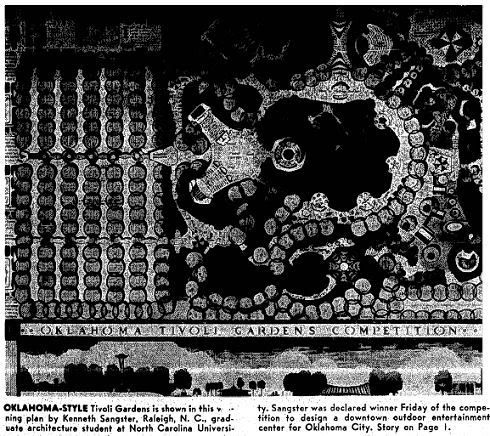
As the "Pei Plan" moved forward, the plans for the "Tivoli Gardens" did also. The image below shows that, by this time, nearly twin botanical tubes were planned (as was an observatory) ... the orientation of this picture is north (Sheridan) at the right, and east (Robinson) at the bottom ...
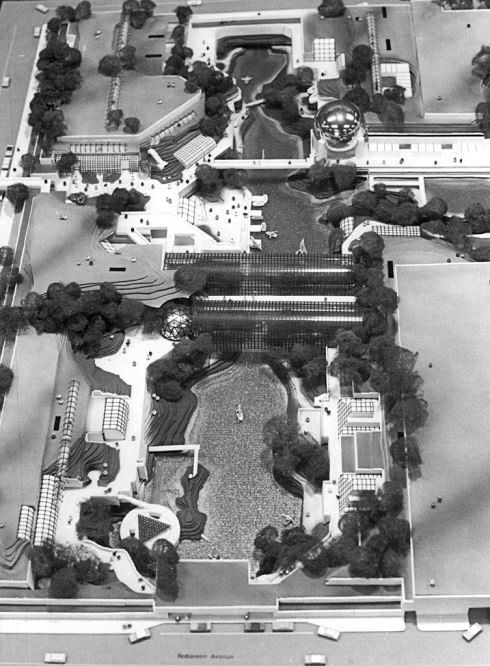
The "Tivoli Gardens" name and concept caught on. The venerable 1922 "Oklahoma Club" had been purchased and remade into the "Tivoli Inn."
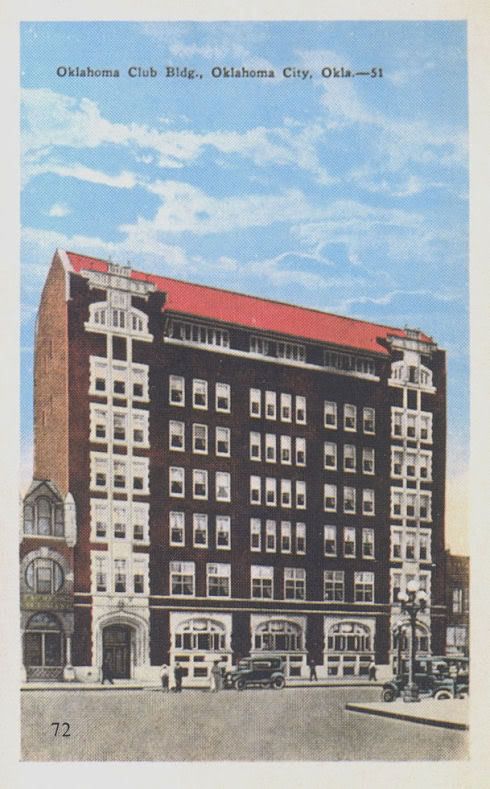
Larger Image Not Available

A June 2, 1972, Oklahoma Journal article announced on page 1 that,
$17 Million 'People's Park Plan UnveiledThe image which accompanied the article showed the Gardens as looking like this:
Perhaps the most imaginative dream for a people's park in the heart of a large American city was unveiled Thursday as the plan for Oklahoma City's Myriad Gardens. Local officials say they hope to reach for the stars and have most of the park finished by 1976.
* * *
Everything from a children's zoo to an ice skating pond and including a 30 foot deep canyon, a two-acre lake, botanical gardens, a sports hall of fame, a classic car museum, arts and science centers, a planetarium, a cluster of restaurants and movie houses, museums and a new Main Library for Oklahoma City is included in the Gardens plan.
* * *
A Phase Two plan for the gardens will extend west to Shartel and triple the park's size to a total of 33 acres.
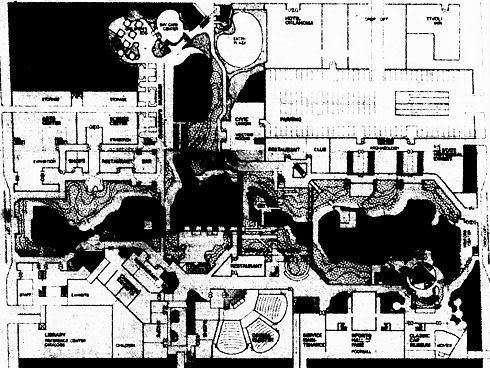
Taking some liberties, I've colorized the image marking areas that I could identify ...
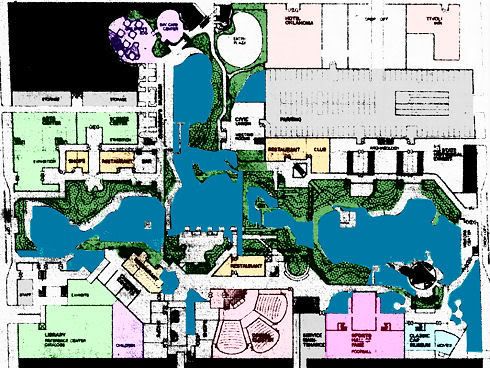
If a botanical "tube" exists in the picture, I can't see it. But, the Biltmore (aka Hotel Oklahoma) and Tivoli Inn were clearly contemplated in the plan, as were numerous other items, the "commercial" parts of which were said in the article to provide monies for the maintenance and expansion of the Gardens.
When the "Work Begins" picture shown in the exhibit at the end of this article was taken, the Biltmore (Oklahoma Hotel) was gone but the Tivoli Inn was still standing, south of the Colcord, below.
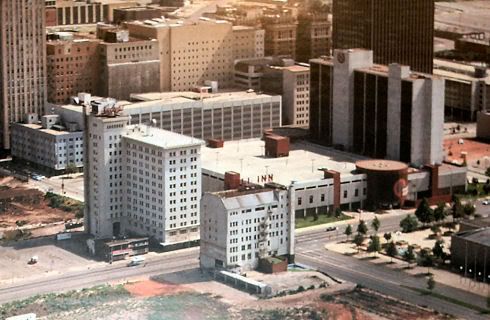
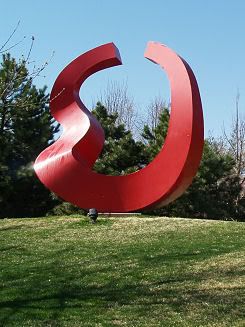 Its owner wanted it to remain at its location at the southwest corner of Sheridan & Robinson, but that didn't happen, though, since the Tivoli's existence eventually got whacked by OCURA!
Its owner wanted it to remain at its location at the southwest corner of Sheridan & Robinson, but that didn't happen, though, since the Tivoli's existence eventually got whacked by OCURA! Today, however, the curvy red sculpture, "Gateway," by sculptor Hans Van de Bovenkamp located south of the Colcord Hotel, marks the spot where the Tivoli Inn once stood.
The 1932 26-floor Biltmore Hotel (then Hotel Oklahoma), was also originally included within the "sphere" of the new downtown park and would border and be incorporated into its northeast corner. Only later, after it was determined that fruitful renovation of that downtown landmark would be cost-prohibitive, did it get the axe, also, in 1977.
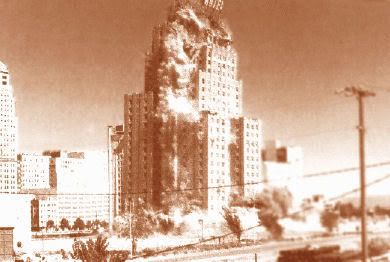
In the end, there would be nothing but park. And ... seeing what finally emerged, as you will, below ... I'm not at all persuaded that the more pastoral park that came to be was a less desirable ambition.
A succinct history of Myriad Gardens is at this page in the Okc Parks & Recreation website. It notes that on May 5, 1970, the name Myriad Gardens was officially adopted and that Oklahoma City purchased the 17-acre site in 1975 for $900,000. Investment in the development phase, including initial site clearing and utility relocation, was approximately $1.2 million. After demolition of the Oklahoma Club/Tivili Gardens Hotel, the City National Bank, the Biltmore and many lesser buildings, a ceremonial groundbreaking occurred on November 17, 1977.
Splashy headlines and stories in the Oklahoman followed the progress. This one, on June 11, 1979, presents an interesting view of the water, then at ground level. The Garden's lake water is supplied via an underground channel of the North Canadian (Oklahoma) river.
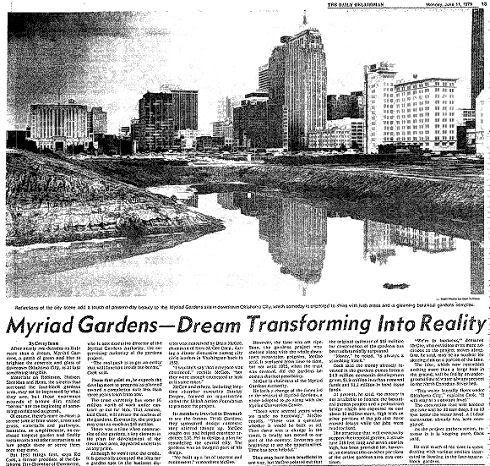
Work On The 3-Story Tube Began 4/22/1983
(Larger image not available)

Gala Opening on 3/25/1988
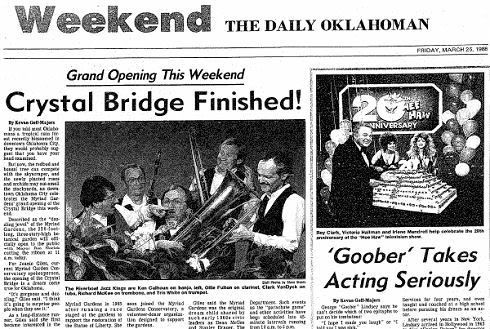
 An aging Dean A. McGee, shown here on that grand day (courtesy OKC: 2nd Time Around and the City of Oklahoma City), lived to see it done.
An aging Dean A. McGee, shown here on that grand day (courtesy OKC: 2nd Time Around and the City of Oklahoma City), lived to see it done. Oklahoman articles reflect that such an end was not all all certain. The raising of private funding to pay for huge portions of the cost, doubts about the Gardens' success after the retail elements of the Urban Renewal plan fell through, and economic woes following the Oil Bust, caused grave doubt that it would ever be done. A June 11, 1979, Oklahoman article, reports,
Soon, the gardens project was shelved along with the whole downtown renovation, McGee said. It surfaced from time to time, but not until 1975, when the trust was created, did the gardens become a distinct possibility. McGee is chairman of the Myriad Gardens Authority.
He feels a change of the times led to the revival of Myriad Gardens, a name adopted to go along with the Myriad Convention Center.
"There were several years when we made no headway," McGee recalls. "There was a question whether it would be built at all. Then there was a change in the times. It finally has moved to our part of the country. Investors are beginning to see the opportunities. Time has been helpful."
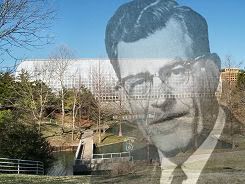 Mr. McGee's perseverance, and his infectious enlistment of others in the community to see the task done, proved to win the day. Dean A. McGee died September 15, 1989, but, look closely and you'll see him still.
Mr. McGee's perseverance, and his infectious enlistment of others in the community to see the task done, proved to win the day. Dean A. McGee died September 15, 1989, but, look closely and you'll see him still.The Myriad Gardens Today. Since the summer of 1987, the Oklahoma City Parks and Recreation Department has operated and maintained the Gardens. The Crystal Bridge opened its doors to the public on March 25, 1988, hence the March 25, 2008, festivities! Click this link or the picture below to have a look at its Myriad Gardens website.
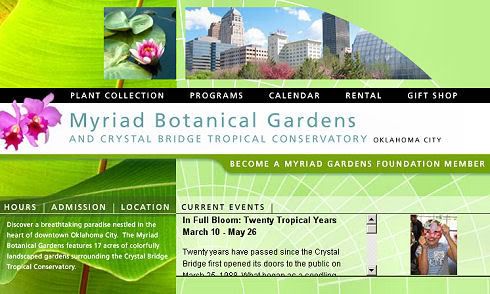
A 2006 overhead view, from the Oklahoma County Assessor's website, is shown below:

Enjoy a stroll around the park ... March 25 & March 28, 2008. The grass isn't quite green yet and trees are just beginning to turn ... both were very beautiful days! Click on any pic for a larger view.
First, March 28 ...
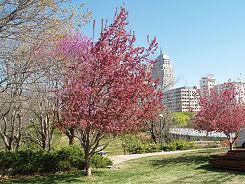 |  |
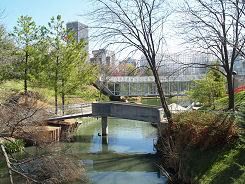 | 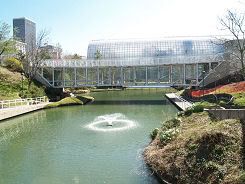 |
 | 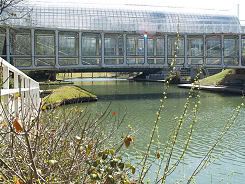 |
 | 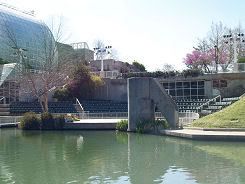 |
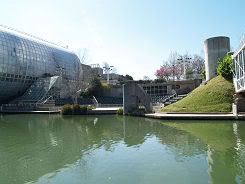 | 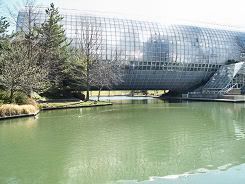 |
 | 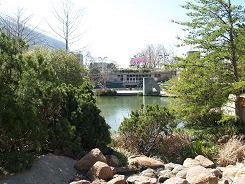 |
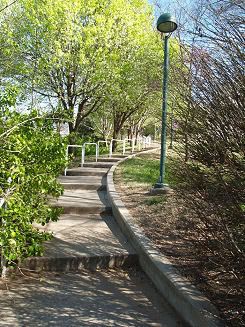 | 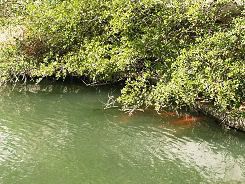 |
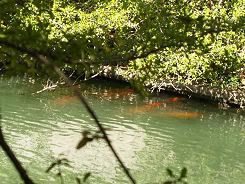 | 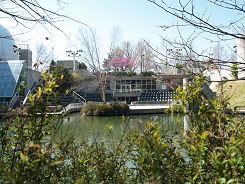 |
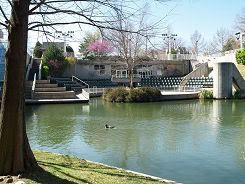 | 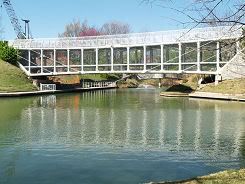 |
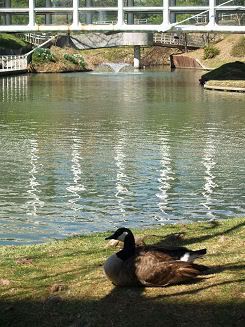 |  |
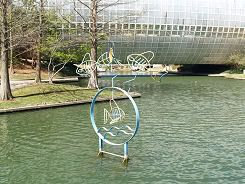 | 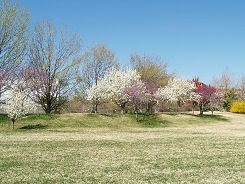 |
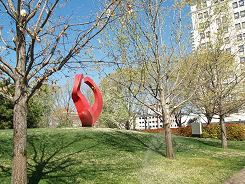 | 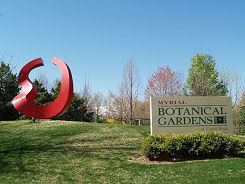 |
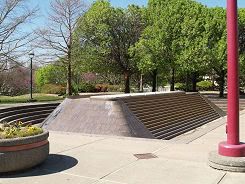 | 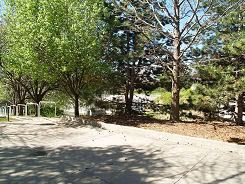 |
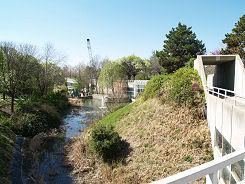 |  |
 | 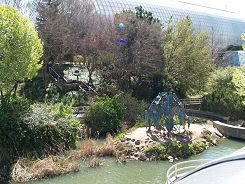 |
 | 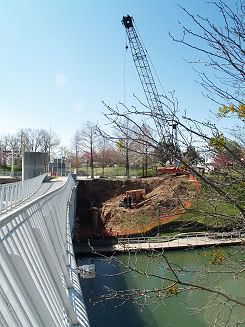 |
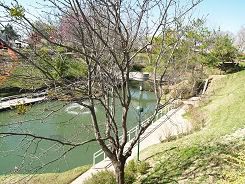 |  |
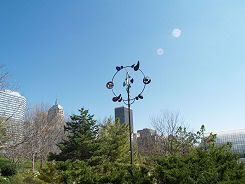 | |
The construction shown in a few of the above pics relates to elevator work being done in conjunction with the $2.5 million expansion and renovation of the Water Stage, completed in 2007. In the same year, it became the home of Oklahoma Shakespeare in the Park. This Wikipedia article says that the Water Stage now contains 210 chair-backed seats and 100 bleacher backed seats.
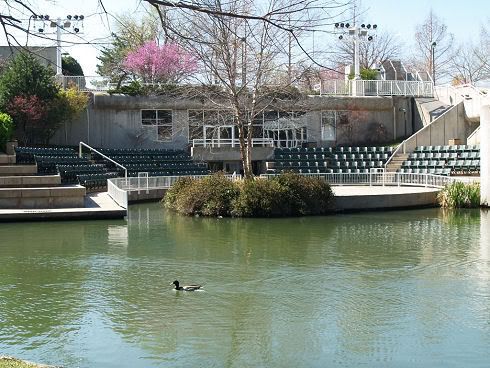
The March 25, 2008, 20th Anniversary. In honor of the occasion, the Oklahoma City Parks and Recreation Department granted free access all day long to the Crystal Bridge Tropical Conservatory.
The first pics were taken outside in the morning, looking West.
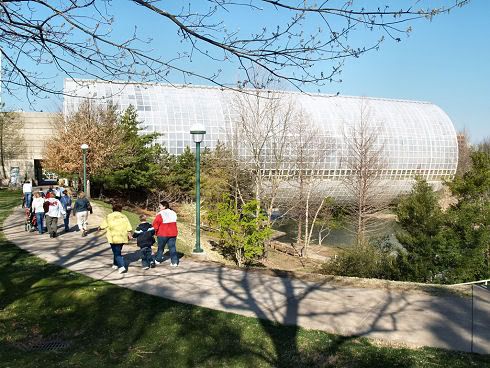

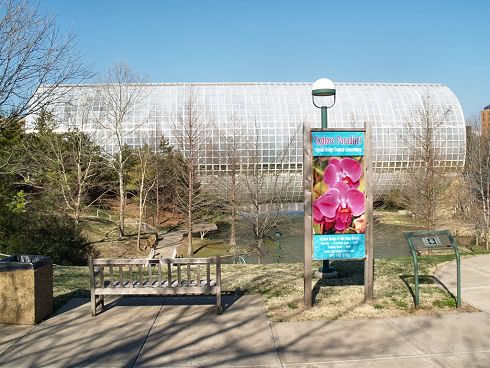
I arrived for the afternoon's activities at about 5:15 and walked to the north end where the Dean A. McGee Center is located. According to the Oklahoma City Parks & Recreation website, this area was opened for public use on June 28, 2001, and is a 5,000 square foot, multi-use and meeting facility funded by the Myriad Gardens Foundation. It was here that the following pictures were taken of historic exhibits located there which trace Myriad Gardens' development and of members of the Foundation and its guests.
Unfortunately, my "flash" is reflected by the glass-enclosed exhibits shown below. Click on a pic for a larger view.
Look closely to see a marker showing the planned location
As usual, click the image for a larger view,
but click here for a much larger view
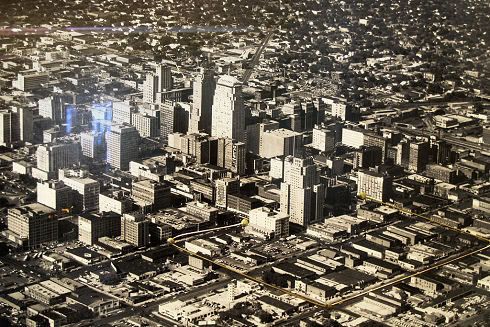
The Plan by Conklin & Rossant
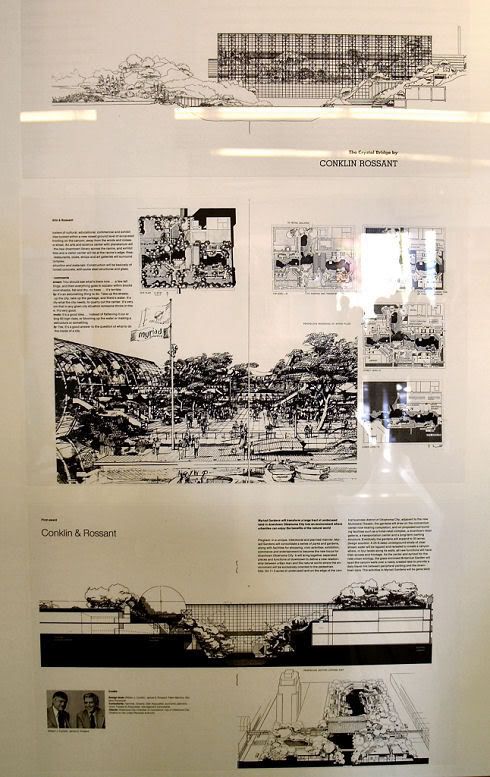
Work Begins
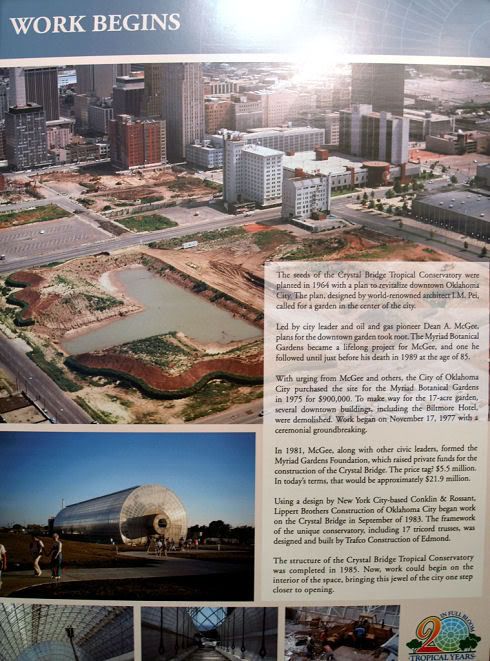
Crystal Bridge During Construction
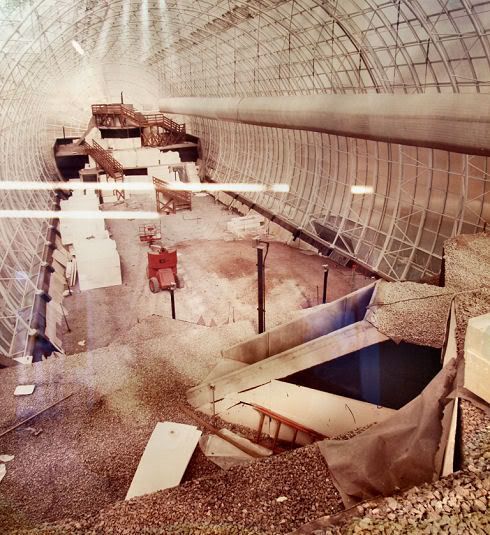
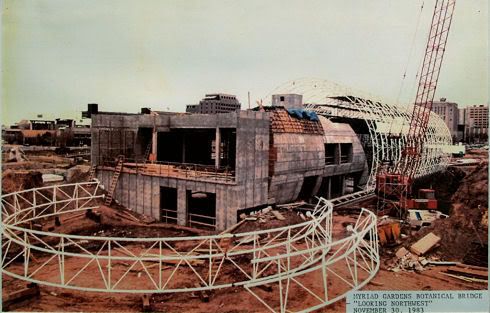
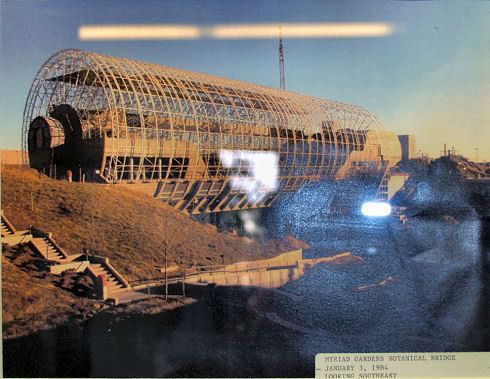
Opening Day
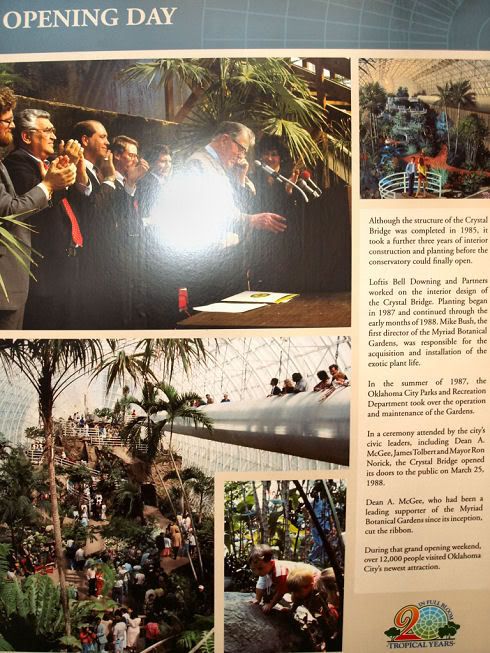
History Pics
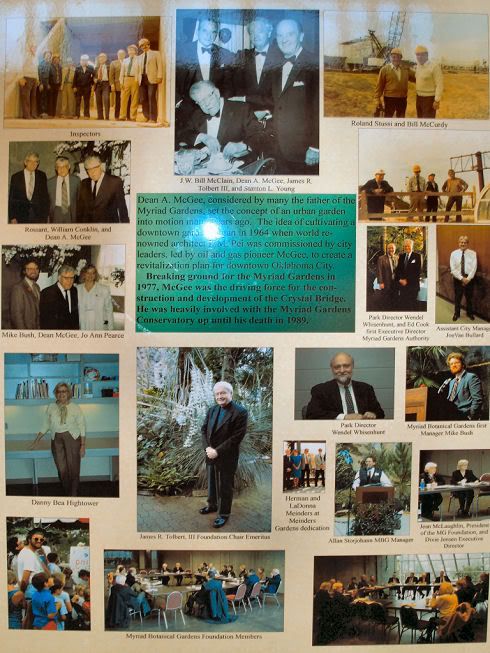
A very nice exhibit that I did not photograph is a large "press clipping" book which, among other things, shows that not everyone was happy spending public money on such a project ... some things never change!
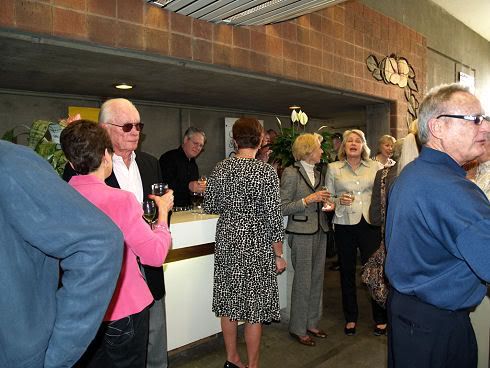
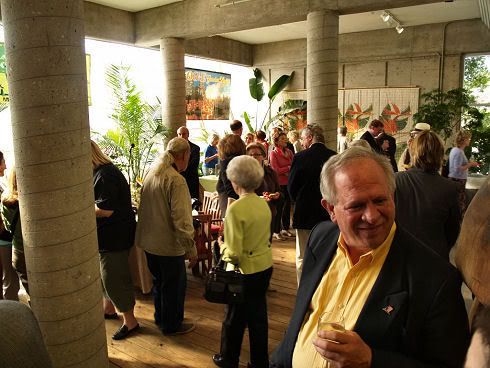
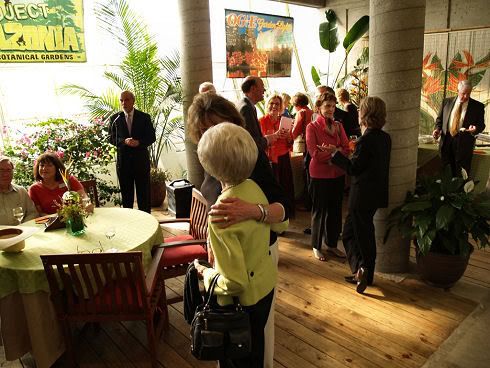
Michael Laird, President of the Myriad Gardens Foundation,
Addresses The Group
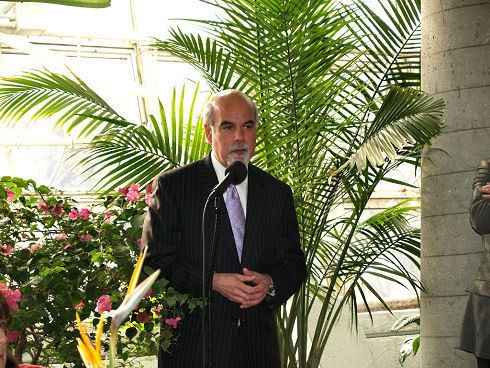
Jim Tolbert, Chairman Emeritus of the Myriad Gardens Foundation,
addresses the group and gives a history of how things came to be
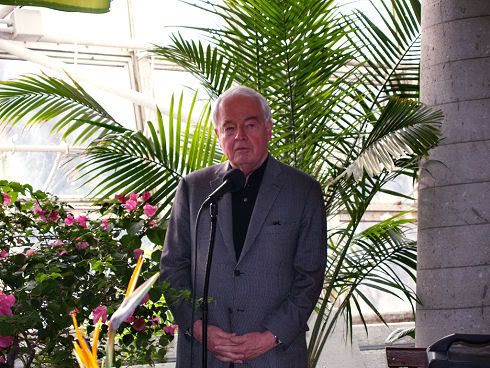
Allan Storjohann, Myriad Botanical Gardens and
Crystal Bridge Tropical Conservatory Manager since 1991
Releases Some New Butterflies
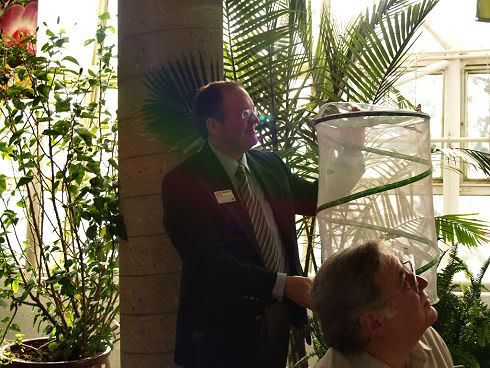
On the way out, I took these pics inside the Crystal Bridge/Botanical Gardens ...

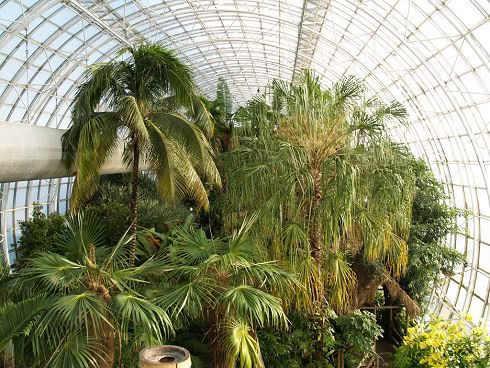
Proceeding Toward The Bottom
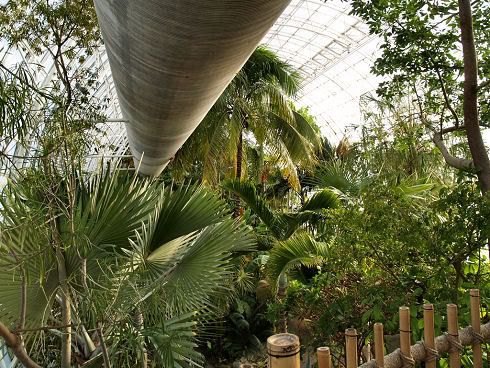
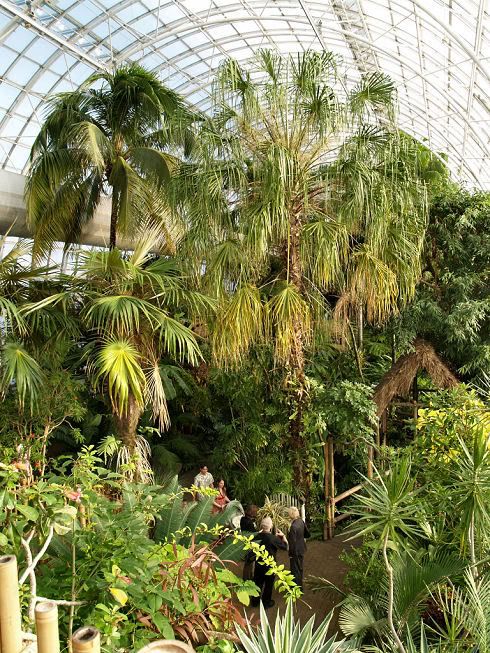
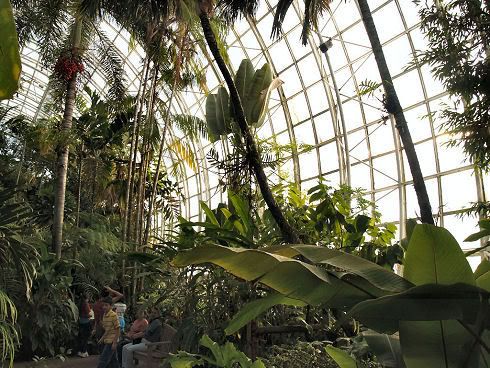
There you have it! March 25, 2008, was a great great day for Oklahoma City, thanks largely to one of Oklahoma City's greatest benefactors, Dean A. McGee!














3 comments:
Really cool post!
I was in grade school when it opened and as part of the promotion they had us schoolkids learn a little, well, jingle about the Myriad Gardens, which went something like, "The Myriad Gardens, in OKC, it's a capital place to be!" It was kind of funny.
Thanks, Stephanie! Good nostalgia!
I did a photo shoot down there in May of 2009 and saw some sad things. The bridge on the west side of the tube was partially closed. The lower level looked like a former solarium of some kind and it had elevators and stairs on both ends. It had large chunks of cement on the floor and was used for junk storage. The underground area on the south end also looked like a mold factory. The plants across the complex were dying. I'm glad its getting a face lift now.
Post a Comment